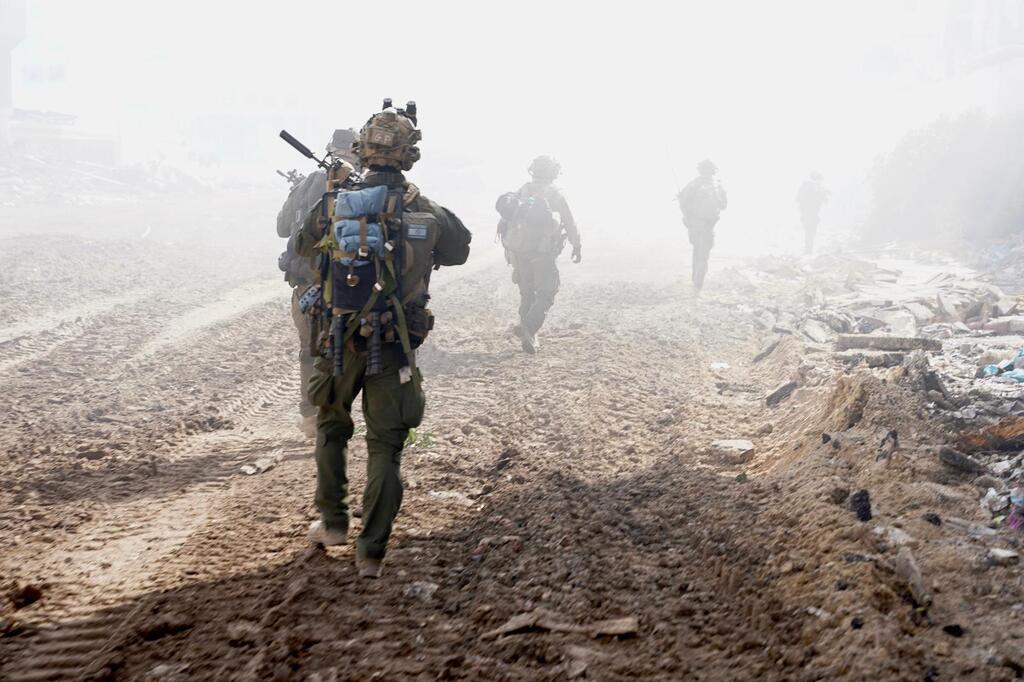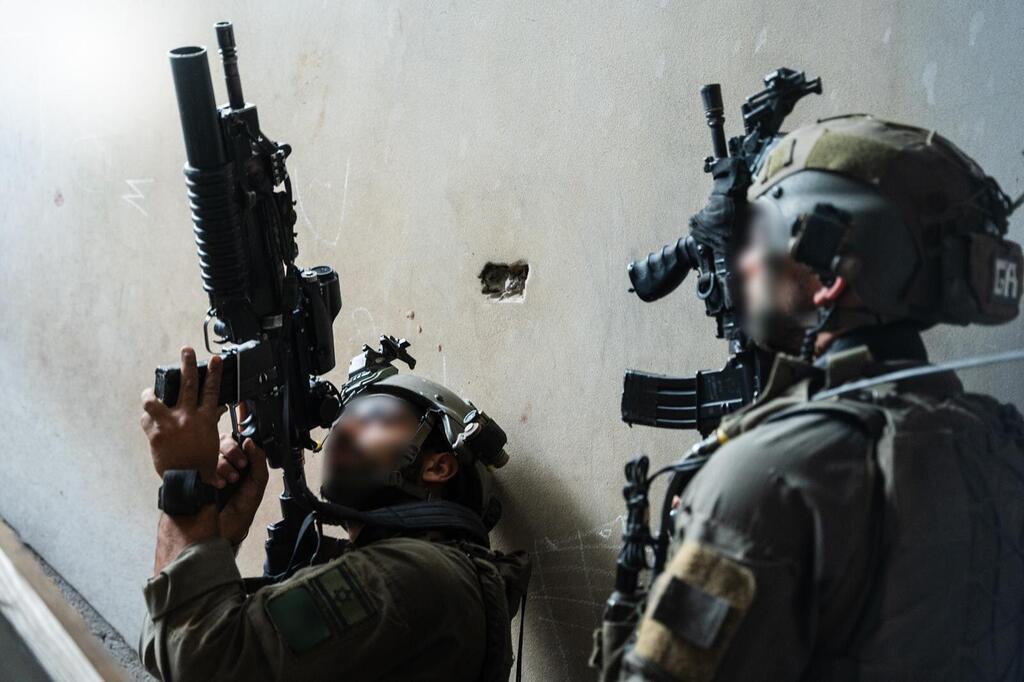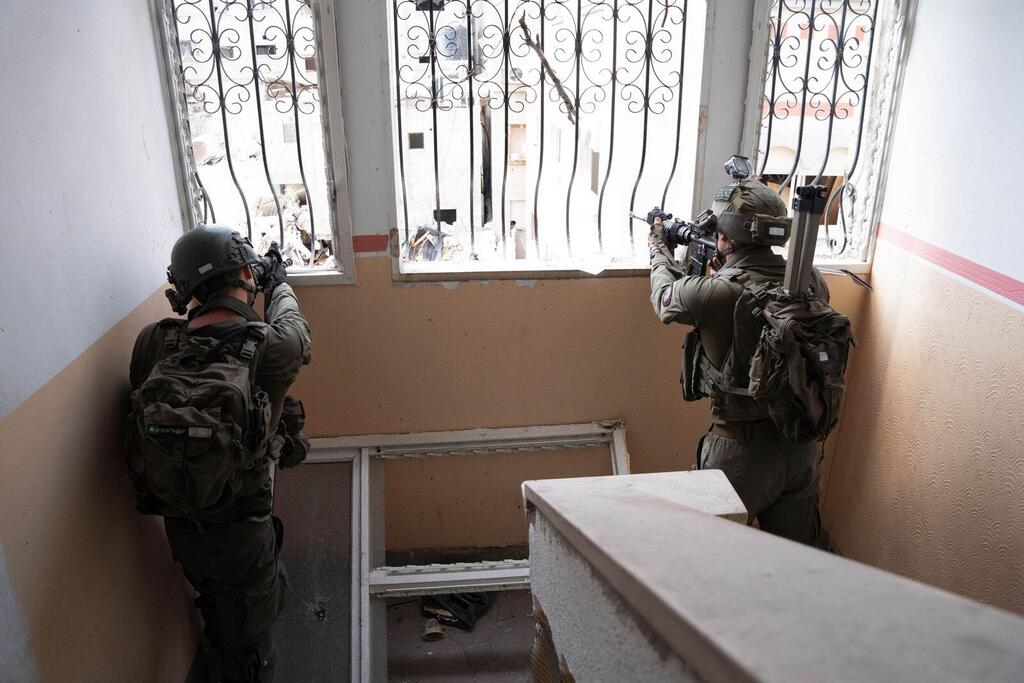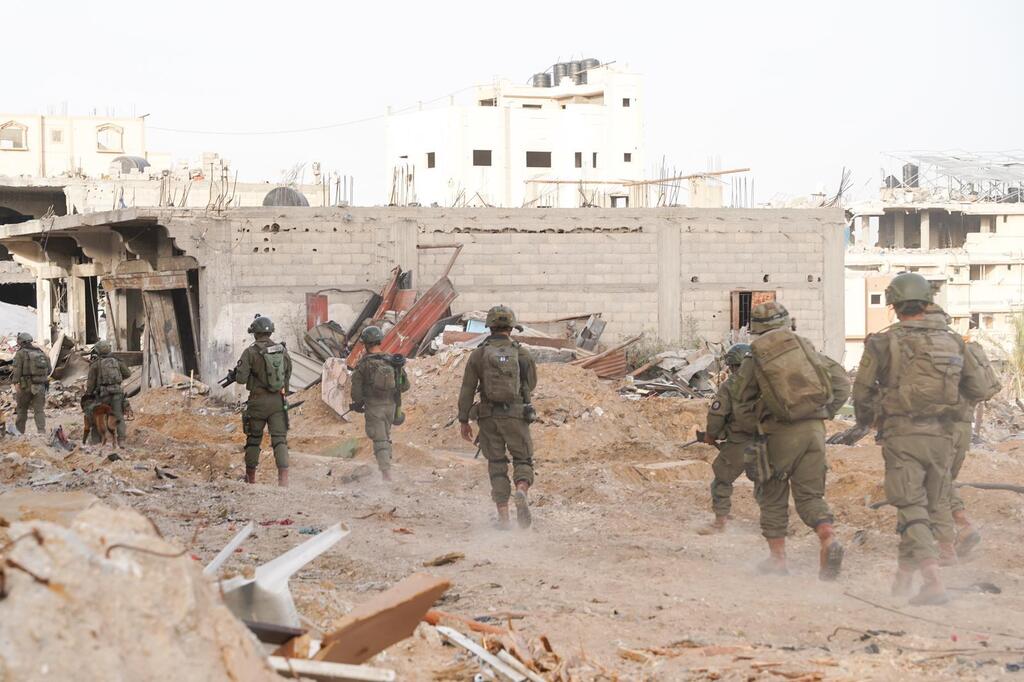Getting your Trinity Audio player ready...
The continuous, intensive coverage during the first six months of the Iron Swords War, against the backdrop of an inflation of media outlets and social media platforms, creates the illusion that the public is well-informed and knowledgeable about the unfolding events.
However, despite studios being open 24/7, a flood of reports, press conferences, IDF spokesperson announcements, bustling networks and footage from journalism teams that until recently had been entering and exiting Gaza, there is significant doubt whether the average media consumer is truly knowledgeable about what is actually happening in the south and other fronts.
How intense is the current fighting compared to the peak of ground operations last winter? Where are the diminishing IDF forces maintaining control in the Gaza Strip? Who is filling the vacuum in areas from which the army has withdrawn? To what extent is Hamas' rule destabilized? Does what appears to be the passive entrenchment of its military wing indicate weakening, or is it a survival tactic?
What is the meaning behind Israel's imposed ambiguity regarding the development of Route 749 and the buffer zone along the border? What is truly happening in the negotiation rooms in Doha, Cairo and Beirut? What are the semi-hidden rules of the attrition war in the north? And how is Israel coping – by sea, air and diplomacy – with the Houthi threat, which affects not only its security but primarily its economy?
Israel dismisses all these open questions and many others with the familiar justifications of information security, fog of war and the realm of uncertainty that is warfare. Every war.
In the meantime, the public is forced to sift through information provided by official Israeli entities, international organizations like the UN, investigative media reports and even the civil institutions of Hamas in the Gaza Strip and the Palestinian Authority.
In some instances, these entities are limited in their ability to access hard, verified truths. For example, the IDF does not have the means to know the exact number of terrorists killed. Similarly, it has no way to determine the number of civilian casualties in the Gaza Strip, and unofficially, during the war, it was claimed that even they rely on data from Hamas' Interior Ministry.
Marking six months to the war on Sunday, in an effort to sketch as current a picture as possible, here are data – and also estimates – meant to help you understand the security social situation Israel has reached since the massacre on October 7.
What the defense establishment has learned
The Iron Swords War has, for the first time in years, placed Israel in a multi-front scenario. While it is still not close to the nightmare scenario it had been preparing for in recent years, involving intense warfare on all fronts accompanied by a continuous and massive barrage of steep trajectory fire from various regions in the Middle East, the IDF has been dealing in the last six months concurrently with a ground operation in Gaza, unrest in the West Bank and launches from Lebanon, rockets and drones from Yemen, Syria and Iraq.
The last six months have underscored the need for both the IDF and the broader defense establishment to engage in a critical reassessment and strategic overhaul across multiple domains. The initial focus is on force structure, spotlighting the lethal shortcomings revealed on the morning of October 7 which highlighted a stark deficiency: neither physical barriers nor technological innovations could substitute for the essential presence of combat-ready troops at the border.
The implications of this revelation are far-reaching, affecting the duration of mandatory service, the extent of reserve duty obligations and potentially influencing the contentious issue of drafting the ultra-Orthodox.
Additionally, a comprehensive range of updates and modifications will be essential across numerous areas from the defense budget, to the intensification of combat training, strategic deployment along borders and the expedited development of interception systems for steep trajectory projectiles.
Efforts will also focus on advancing the self-production of weaponry to diminish reliance on foreign procurement. Most critically, a thorough reevaluation of both military (AMAN) and civilian (Shin Bet) intelligence apparatuses, along with their operational dependencies, is imperative.
According to data released by the IDF for the six-month anniversary of the war, 604 soldiers have been killed since October 7, with 260 of those fatalities occurring since the beginning of ground operations.
Operational accidents claimed 41 of these lives (20 from friendly fire, five from unintentional discharge and 16 from accidents involving weapons, ammunition and vehicles). In total, 3,188 soldiers were injured, 497 of them seriously (from the start of ground operations: 1,550 and 318 respectively). During the war, the Air Force conducted approximately 950 medical evacuation missions, transporting around 1,300 wounded.
The IDF has also highlighted the significant psychological impact of the war on its soldiers. Data indicates that approximately 10,500 soldiers experienced a traumatic event and manifested symptoms of trauma, with around 1,890 of them—representing about 18%—unable to return to combat duties.
This week, reports emerged both domestically and internationally regarding the artificial intelligence system Lavender used by the IDF for identifying Hamas and Palestinian Islamic Jihad members in the Gaza Strip.
According to an investigation by the Local Talk website, IDF sources confirmed that based on the data it provided, a significant number of Palestinian civilians were authorized to be killed in the Gaza Strip, especially during the first few weeks and months of the war. The IDF said in response that these actions were conducted in accordance with the principles of proportionality under international law.
The military’s data made no mention of civilian casualties, focusing instead on 12,000 terrorists eliminated in Gaza, including five battalion commanders and "more than 20 company commanders") and in Lebanon (about 330). According to the IDF, since the beginning of the war, approximately 32,000 targets in the Gaza Strip and about 3,300 in Lebanon have been attacked.
The IDF reported a total of approximately 12,235 launches toward Israel, including 9,100 from the Gaza Strip, about 3,100 from Lebanon and roughly 35 from Syria. No data were provided on the success rate of intercepting these projectiles or on launches by the Houthis from Yemen.
Since October 7, the IDF has mobilized around 300,000 reserve soldiers, of whom approximately 51,000 are women. According to the IDF spokesperson, about 24,000 of these reservists are aged between 50 and 70.
Meanwhile, the IDF is also combating terrorism in the West Bank, including a series of operations in villages, cities and refugee camps. As part of its efforts, the IDF conducted 50 aerial strikes—a measure considered highly unusual prior to the war.
Over the last six months, the Palestinian Authority's Ministry of Health reported 459 deaths (according to the IDF, 420 suspected terrorists were eliminated. The discrepancy likely arises from injuries resulting in death during hospitalization, non-involved residents, etc.).
Additionally, the security forces have arrested 3,600 Palestinians, 1,600 of whom are linked to Hamas. Since October 7, approximately NIS 18 million ($5 million) have been confiscated from terrorist entities in the West Bank.






